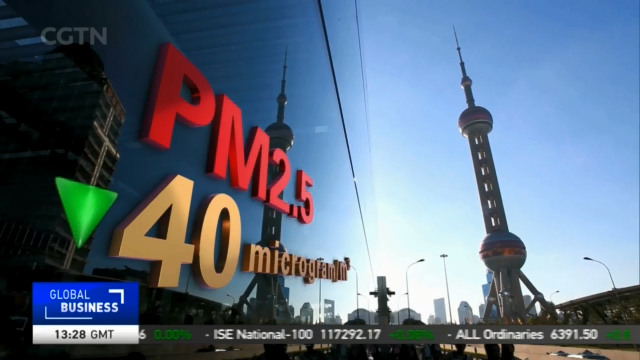
22:12, 27-Jul-2018
Fresh Air: Creating green homes for everyone
Updated
21:58, 30-Jul-2018
03:40

Time now for our special report on China's efforts to integrate and develop the Yangtze Delta Region. Today, it's a look at how the region is tackling air pollution.
At the end of 2013, heavy air pollution persisted for nine days in the Yangtze River Delta. For many it was a turning point that something finally needed to be done. That incident prompted Zhejiang, Jiangsu and Anhui provinces and Shanghai to jointly establish an inter-regional pollution prevention coordination mechanism.
Soon, a national laboratory specializing in studying the causes of atmospheric composite pollution was established in Shanghai. It covers port terminals, factories, and motor vehicle inspection centers. For these outlets, controlling emissions from motor vehicles was seen as absolutely necessary.
LI LI SHANGHAI ACADEMY OF ENVIRONMENTAL SCIENCES "What is the current problem we face and what is the root cause of this pollution problem? What are the different factors? We need to clear things up using scientific data. Only then can we make policies to improve the situation."
Three provinces and Shanghai have established an inter-regional vehicle environmental protection information service platform to impose restrictions on high-polluting vehicles. As of now, a total of 3.22 million yellow-label vehicles and old vehicles have been eliminated. Another source of air pollution is emissions from ships. The Yangtze River Delta is the busiest shipping artery in China. Vessel emissions are the main source of PM2.5 pollutants. At the end of 2015, a Joint Prevention and Control Zone in the waters of the Yangtze River Delta was demarcated, requiring all ships entering the zone to use low-sulfur fuel or power supplied from shore.
S.S. Changbao docked at Yangshan Port. It was transporting more than 8,500 standard containers. After a security inspection, the dock staff connected two cables from the ship to a power box on shore. The 100,000-ton freighter then shut down its engine.
CHEN YONG SHANGHAI PORT GROUP "The shore-based power supply over 24 hours is about 20,000 KW hours, which is the equivalent of burning some 10 tons of oil onboard."
Cooperation is also taking place with weather forecasts. For the past four years, forecasters from three provinces and Shanghai will consult on the air quality forecast for the Yangtze River Delta every day at 2 pm.
FU QINGYAN, CHIEF ENGINEER SHANGHAI ENVIRONMENTAL MONITORING CENTER "PM2.5 pollutants are not restricted to one city, they also cause pollution in nearby cities. The pollution situation needs to be monitored by professionals across the whole region."
The four years of joint prevention and control of air pollution in the Yangtze River Delta has proved to be a great success. The average concentration of PM2.5 in the 26 cities decreased by 34% from 67 micrograms per cubic meter in 2013 to 44 in 2017, while the average concentration of PM2.5 in Shanghai in 2017 was even below 40 micrograms per cubic meter.
This year's list of environmental protection tasks for the Yangtze River Delta includes issues requiring various sides to work together. Only through concerted efforts can all the stakeholders benefit.

SITEMAP
Copyright © 2018 CGTN. Beijing ICP prepared NO.16065310-3
Copyright © 2018 CGTN. Beijing ICP prepared NO.16065310-3